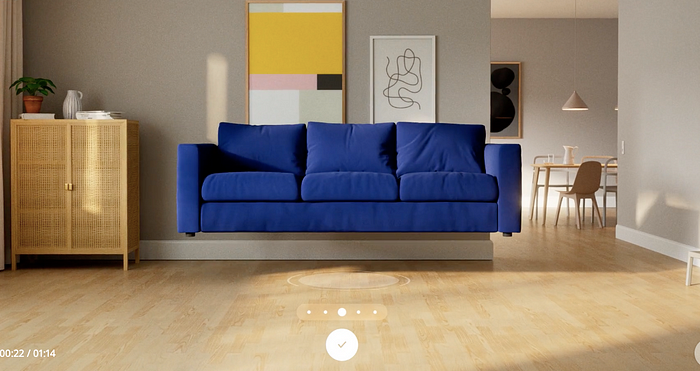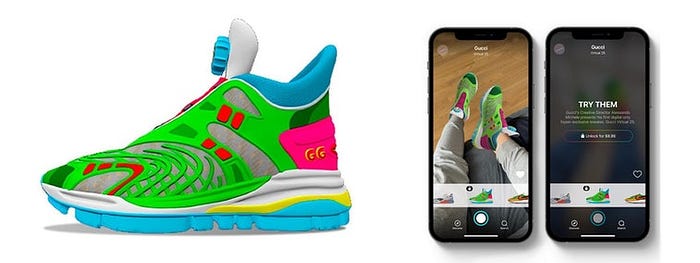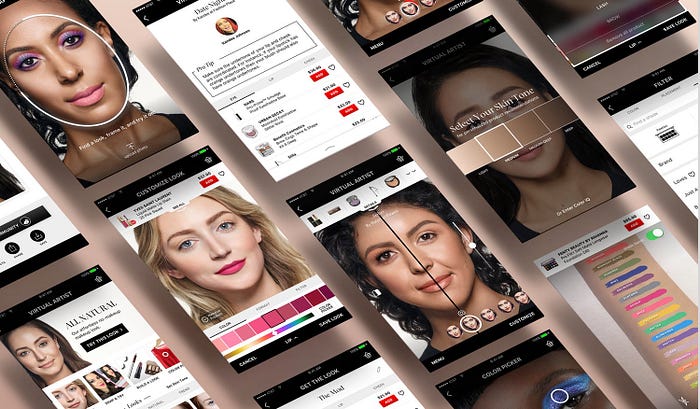“AR is designed to add; enhance the things you do as a human being – being outside, socializing with other people, shopping, playing, having fun. AR can make all those things better.”
What is Augmented Reality?
Augmented reality is an interactive experience of a real-world environment that is achieved through the use of digital visual elements delivered via technology, and over the past couple of years, AR has established itself in almost every industry and sector!
On the other hand, Augmented reality can possess certain challenges for Designers. The major reason for this is the lack of boundaries and unclear expectations. In this article, we will dive into some of the UX principles that can be followed to design a “ Good UX for AR”.
UX Design Principles For Good AR
- Define The Environment: It’s very important to keep the environment familiar and Intuitive. Since we live in a multidimensional world, AR can provide user experiences that are not possible using traditional methods.
- Keep The Designs Predictable: Augmented Reality can often blur the line between reality and virtual — Physical and Digital. Hence, it becomes important to seek familiarity between gestures and interactions.
- Leaving Hints: All of us have experienced that having clues and instructions encourages one to interact with the environment better in the physical world. The same goes for digital experiences. Graphics and dynamics can be inserted not only as a guide but as a part of the experience itself.
- Design For a Wide User-Base: Augmented Reality is for everyone; by everyone. As mentioned above — AR is being incorporated into almost all industries, meaning a lot of people from different walks and personas will be interacting with your designs. Hence, Weigh accessibility versus aesthetics and keep adapting and improving.
- Make The User Experience Meangiful: Before going ahead with the designs establish the user needs first. Ask these questions –
>> Will this enhance the experience?
>> What is your AR experience doing for the user?
>> Is it meaningful to the user?
Asking these questions will help in bridging the gap between imagining and procuring physical objects into a middle ground of visualization.
Some Notable AR Experiences By Brands
- IKEA – Studio App: Space10 — IKEA’s design lab, recently updated its AR offerings to provide a more functional and immersive experience. Previously, the Place app allowed users to place virtual furniture in a room. But now in the all-new IKEA Studio app users will be able to capture entire 3D room plans and re-design every element in the room, including windows and curtains.

- Gucci – Virtual Sneakers: One of the first luxury brands to bring AR into their game was Gucci by providing customers a visual representation of how a product will look in real life. This helped the customers in making a well-informed decision and in turn, improved customer satisfaction.

- Sephora – Virtual Artist: Sephora’s ‘Virtual Artist’ is one of the best AR tools within the beauty industry. The technology lets consumers see what certain makeup products might look like on their faces. To do so, it uses Modiface technology to scan facial features, before overlaying different lip colors, eye shadows, and so on.

Even though integrating AR into designs can be challenging, it is equally rewarding! AR has enormous potential and will prove highly beneficial in solving UX challenges for designers and will help brands grow with the ever-evolving technology and provide users with a digitally immersive experience.







